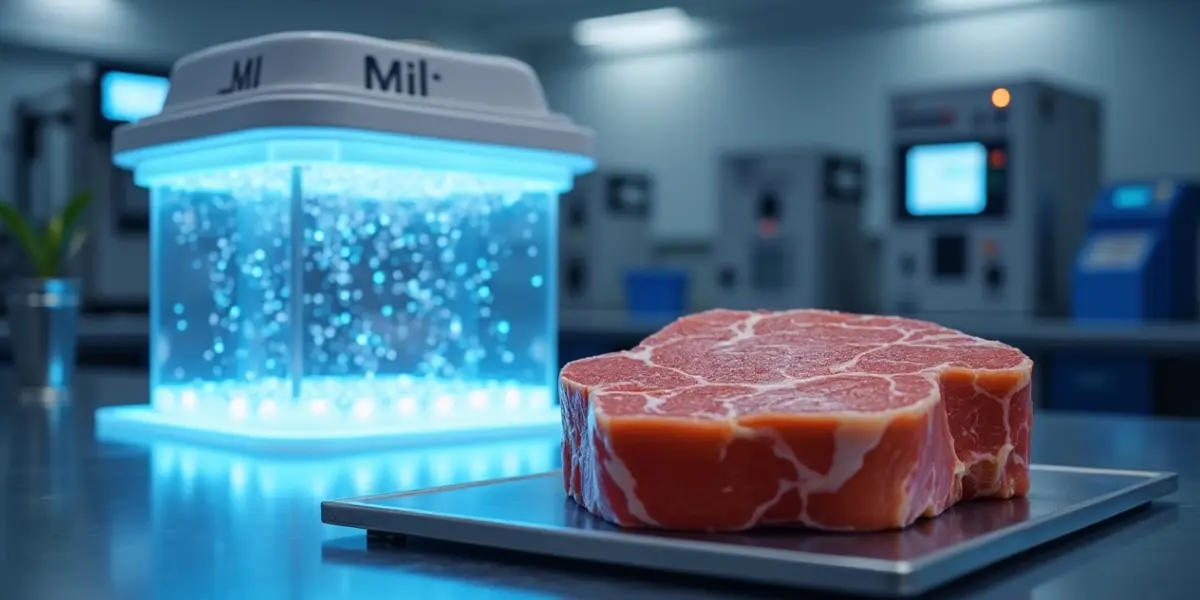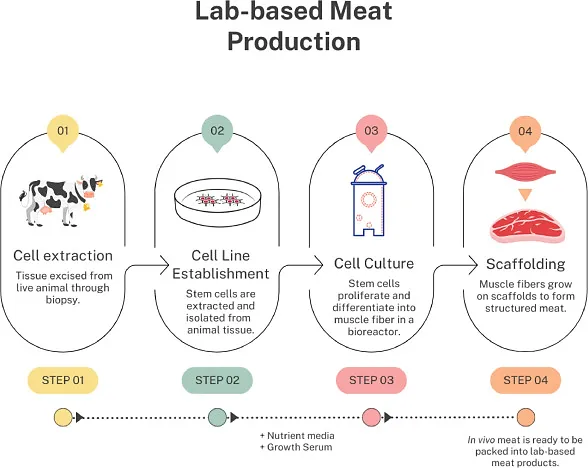
The Future of Food: Lab-Grown Meat and Sustainable Eating
The future of food is rapidly unfolding, and lab grown meat is considered as a revolutionary answer to some of the biggest problems in the meat production industry. This is the case given the growing world population hence the need to address issues to do with sustainability of resources, animal rights and food shortages. Land based seafood farming or Aquaculture is one of the most significant contenders to traditional livestock farming; it involves growing of lab meat, cultures or Cellular meat.
Lab-grown meat also possesses one of the strongest narrative advantages: it has the potential of greatly diminishing the negative impact that meat production has on the environment. Conventional livestock farming is a significant source of funhouse gas emission, clearing, water consumption. As it is estimated that cultured meat could lower greenhouse gas emission to up to 96%, land use 99% and water use between 82%-96% than from conventional meat production 6. This shift does not only tackle climate change but also the conservation of those important natural resources as well. But besides environmental issues, cultured meat has some positive implications for the moral treatment of animals. This technique releases most of the ethical issues that come with farming, and through growing meat in animal cell culture, there is no need for animals to be raised and slaughtered for meat. Consumers pay attention to values they cherish, and the company promoted a method to avoid abusing animals for food production.

Innovation is the key to moving cultivated meat from the lab to industry in mass production. Recent advancements such as the ones made at Tufts University have made it easier to cultivate bovine muscle cells that automatically secrete growth factors, an aspect that has in the past been very costly but, could be brought down by as much as 90%. These innovations are crucial to assist in making cultured meat accessible to the consumer in the market and ensured cheap.
The other important thing about the future of lab-grown meat is its regulatory acceptance. The U.S.D.A. accepting "cell-cultivated chicken" labels is another moment that has legitimized this industry and provided clear labeling to consumers. It will open the door wide to market penetration as more of these products receive regulatory approvals and increase consumer acceptance. Although all these developments are there, still many challenges remain. Taste and texture must be on par with or better than that of traditional meats to achieve wide acceptance. Continuous consumer testing is necessary to fine-tune these factors so that lab-grown options can compete in the marketplace.
In conclusion, lab-grown meat is not only a new approach towards food production but also offers sustainability, ethics, and innovation. As technology advances with the changing attitudes of people, cultured meat may likely become a staple in worldwide diets, changing the landscape of our relationship with food and the environment for posterity. To create 2d or 3d animation for your project contact our experts.